Everything you need to know about cloud kitchens: Pros, Cons, and Tech Stack
Imagine a restaurant. What do you see? I bet you see a traditional restaurant that includes a kitchen with culinary staff cooking meals, waiters in similar uniforms, tables and chairs, and a room with a window that brings in the daylight creating a friendly atmosphere.
Such restaurants are a source of warm memories for guests who came to dine-in, and a considerable expense for a restaurant owner who pays the rent, salaries, and taxes to keep their business afloat.
The pandemic caused restaurant-goers to stay at home. With no profit from dine-ins, restaurant owners were left with an empty traditional restaurant, but their expenses remained the same. To adapt to the new normal, restaurants cut expenses to maximize profit.
While some restaurants provide meal takeaways, others adopt the online-only restaurant paradigm known as a cloud or ghost kitchen.
The concept of cloud kitchens is gaining momentum right on time:
- The pandemic made online food delivery 300% times more popular
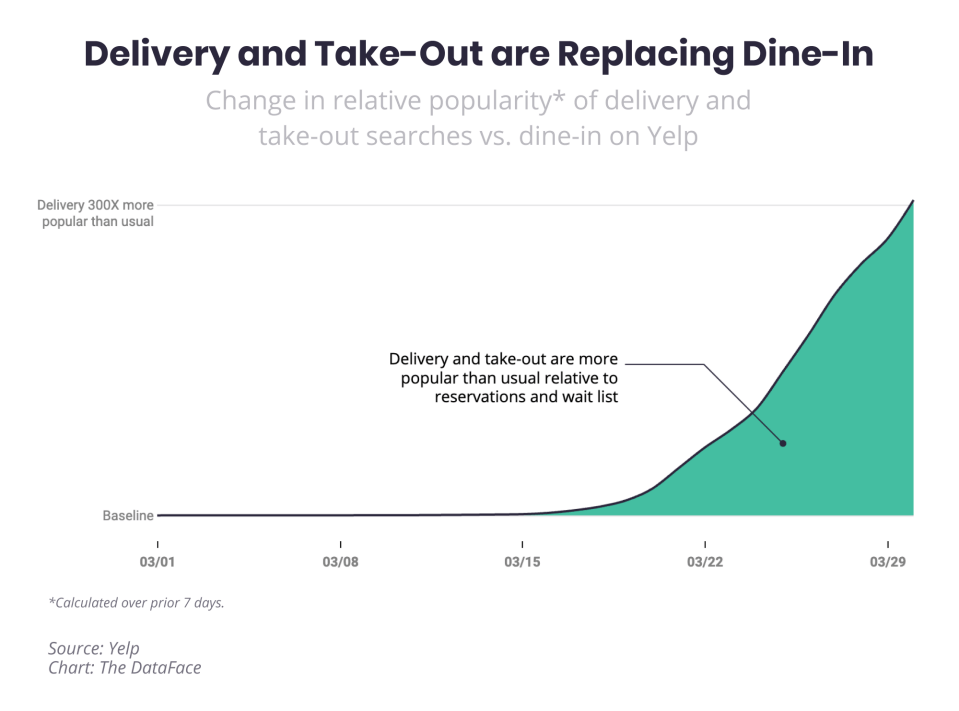
- Bars and restaurants were closed due to health and safety concerns
- The decline of seated diners in restaurants in the U.S. was a staggering 50.31 percent on November 28, 2020
- Third-party services typically take 30% or more (plus taxes) on orders
- 70% of consumers would rather order directly from a restaurant than from third-party organizations
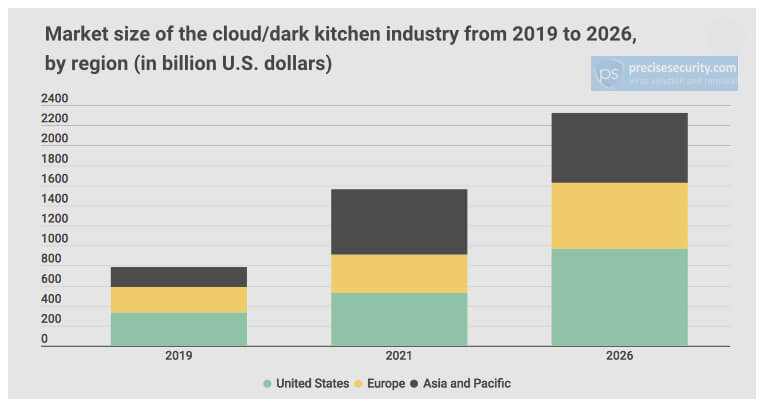
Moreover, the report “Is the Kitchen Dead?” UBS claimed that the online food delivery market would grow 10 times in the next 10 years, from $35 billion currently to $365 billion by 2030.
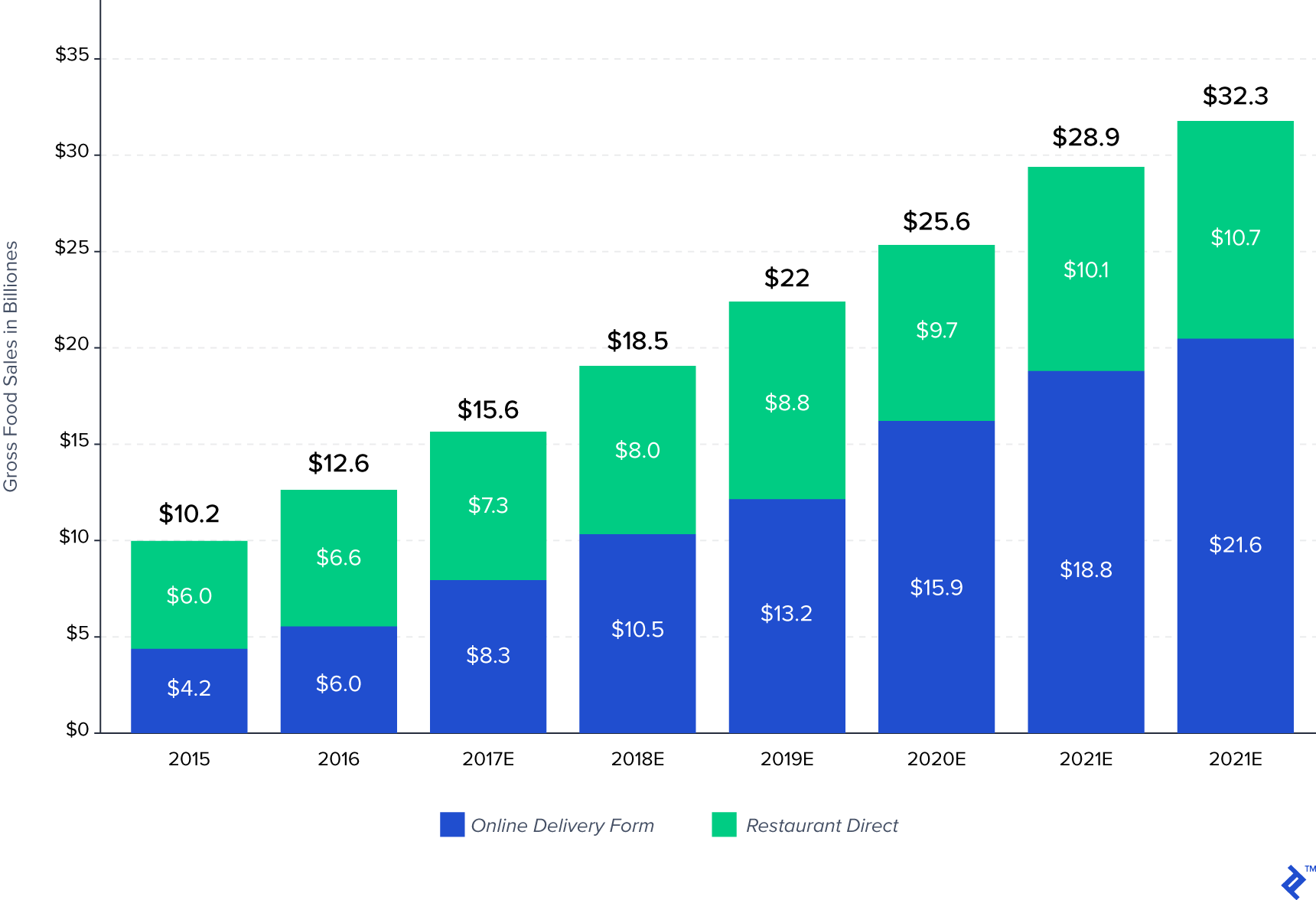
[Source]
If you are considering developing a cloud kitchen for your restaurant startup, or want to reduce expenses for a traditional restaurant business, this article is right for you.
Below, we’ll explain what a cloud kitchen is and whether it is a profitable niche for investments. The article also includes the pros and cons of cloud kitchens and a list of core technologies and components for opening your cloud kitchens from the ground up.
What is a cloud kitchen?
People name cloud kitchens in different ways – dark kitchens, virtual kitchens, ghost kitchens, commissary kitchens, shared kitchens, and even shadow kitchens. But despite the different names, they share the same concept – commercial facilities to prepare meals ordered for delivery.
Cloud kitchens don’t include dine-in areas, only kitchen spaces shared by one or several restaurant brands. Online restaurants receive most food delivery orders online from digital channels.
How does a cloud kitchen operate?
There is a simple cloud kitchen model. Shared kitchens work as food manufacturing factories: restaurants receive orders for food delivery, prepare orders and give them to couriers.
Unlike traditional brick-and-mortar restaurants, where service and interiors are as important as the taste and quality of dishes, cloud kitchens focus on providing consistent quality output at the lowest cost possible. Thus, chefs and culinary staff no longer worry about how or where customers eat meals.
Online kitchens receive customer acquisition and orders through digital means – own delivery applications or food aggregators. Cloud kitchens heavily invest in technologies for the entire business operation.
Apart from leveraging modern technologies, cloud kitchen owners invest in well-equipped kitchen infrastructure and a trained workforce.
Are cloud kitchens profitable?
Shared kitchens are profitable for three reasons:
A cloud kitchen requires $100,000 for a setup, while a brick-and-mortar restaurant costs $1 – $1,5 million. Shared is more profitable than a restaurant because a ghost kitchen serves customers city-wide without investing in large premises.
To get the most profit out of virtual kitchens, you can run several restaurant brands on the same kitchen facilities.
For example, if you already have an Italian restaurant brand, you can also run Chinese, Indian, and American food delivery under separate brands.
In this way, you’ll acquire more customers without changing your Italian restaurant menu.
If you don’t have an existing restaurant, nor the desire to pay for facility rental, you can still create a cloud kitchen and receive money from it.
Another idea for a cloud kitchen business model is to rent a cheap facility, equip shared kitchen spaces, and offer such rooms for rent to traditional restaurants.
One example is a former Uber CEO, Travis Kalanick, who invested $150 million in a new startup called City Storage Systems (CSS). CSS is a real estate investment company that buys cheap properties and repurposes them into smart, shared cloud kitchens for delivery-only restaurant businesses.
Related readings:
REASONS TO GIVE UP ON UBEREATS AND BUILD A RESTAURANT MOBILE APP
HOW TO BUILD A FOOD DELIVERY APP LIKE UBEREATS
The future of the cloud kitchen looks bright. But before investing in a cloud kitchen business, you need to learn more about the pros and cons of cloud kitchens.
What are the advantages of cloud kitchens?
Compared to the traditional restaurant business model, shared kitchens have the following advantages:
On-demand labor. As a cloud kitchen owner, you can take advantage of on-demand work while saving staffing costs and avoiding compliance with labor laws.
Scaling economy. You can save on ingredient costs by making larger orders for several delivery-only brands that operate from the same kitchen. It is better to invest in new equipment, delivery apps, and consumer service in order to receive a competitive edge over traditional restaurants.
Flexible layout. Ghost kitchens must prepare and pack orders quickly to be profitable. Thanks to custom-build spaces and optimized processes, cloud kitchens make meal cooking and delivery effective and quick.
Rich menu. The main priority of cloud kitchens is the speed of meal preparation and handling. When running several restaurant brands from one shared kitchen, you can batch prepared ingredients for different menus.
Real-time adaptability. Cloud kitchens are built with tech in mind. This means you can use analytics software for optimizing processes, ordering, and consumer behavior. You can also adapt the menu to meet the new demands of customers and increase margins.
Along with the benefits, cloud kitchens also include certain drawbacks.
What are the disadvantages of ghost kitchens?
The potential challenges that come with running a cloud kitchen are:
Unqualified staff. The on-demand staff does not always have adequate training and carry risks in food safety. You can deal with this issue by investing in staff training and hiring full-time staff members. You also can try a combination of working mainly with permanent staff and hiring on-demand workers when your permanent staff need help with handling too many ordered meals.
Last-mile delivery. If you consider food ordering platforms like UberEats as the primary source for ordering food, think twice. Firstly, you’ll need to pay extra fees for listing and delivery services. Secondly, you can’t control conditions in which couriers will deliver meals, thus threatening your reputation. To solve these issues, consider arranging your own delivery services where you have control over everything.
Small delivery radius. To deliver orders within 30 minutes is an industry-standard. Your delivery radius should be 3-5 miles to meet this standard, which might be a problem if you consider renting a brick-and-mortar facility in a low-income area. To be near suitable customers, arrange a cloud kitchen in their neighborhood.
Local regulations. Since ghost kitchens are less common than traditional restaurants, health department representatives may start hitting you with unexpected requirements. They can also treat your business like a full-service restaurant. Cooks who work in one cloud kitchen must be licensed to produce and distribute food.
Now that you are informed about the pitfalls to avoid so that you can protect your cloud kitchen beforehand, let’s take a small step toward the business of your dream and dig into the technologies and solutions of a ghost kitchen.
Choosing the right tech stack for a cloud kitchen
Your online restaurant will operate without waiters, menu, and even a brick-and-mortar facility. Thus, a cloud kitchen’s operation depends directly on technologies that will receive online orders, handle online payments, display the order to kitchen staff, manage inventory, gather and analyze your customers’ data.
We prepared the list of tech solutions that includes:
Customer mobile app
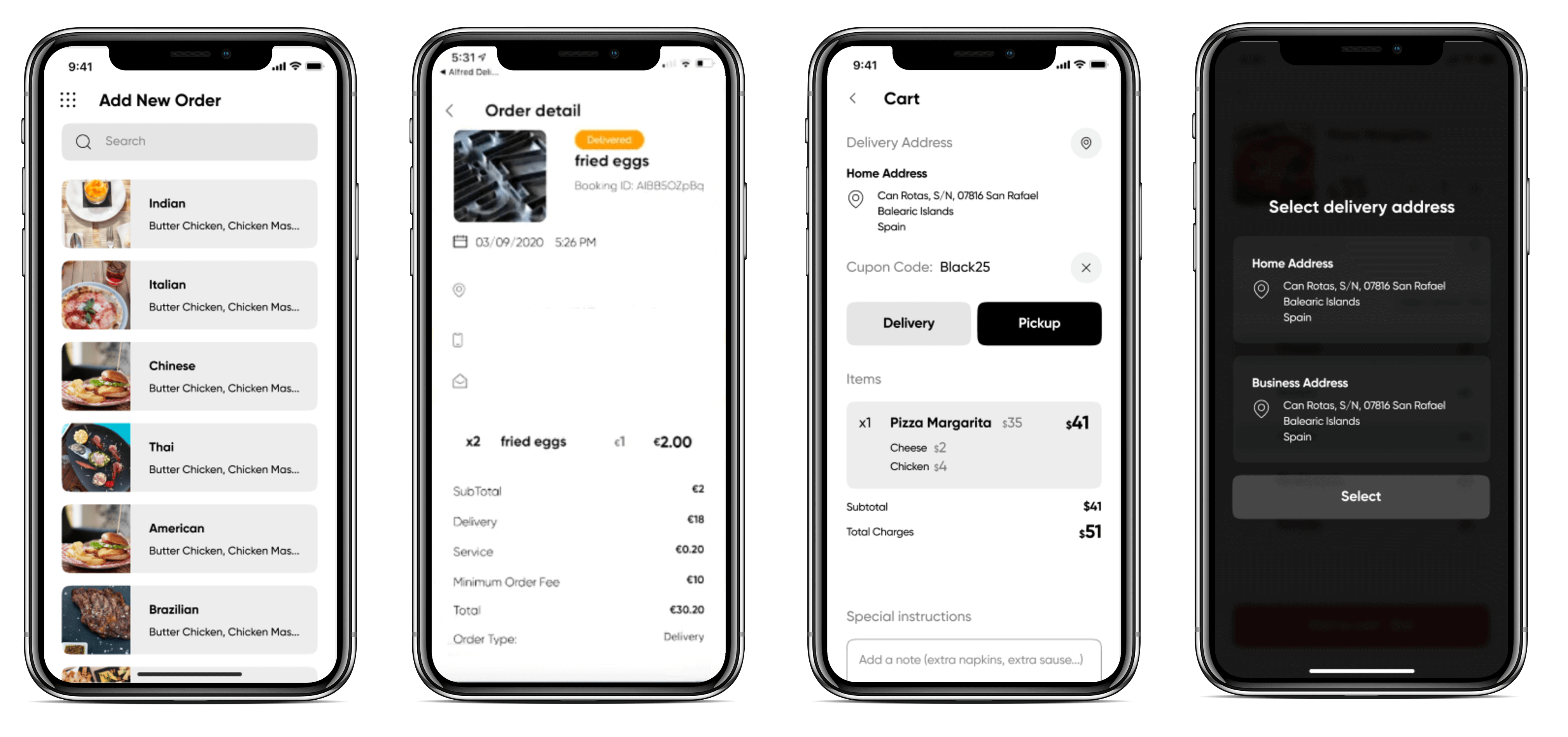
[The APP Solutions prototype for Alfred Ibiza, a food ordering app]
The delivery app will be your organic source of online orders. It allows customers to place meal orders using their mobile devices.
To create a custom application for a cloud kitchen, our developers will need 2-4 months, and the project will cost from $20K.
The essential feature list for a customer app includes the following elements:
- Menu with different sections for meals and drinks
- Meal page with ingredients, image, and price
- Shopping cart where your customers will add meals they’ll order
- Delivery address where the courier needs to deliver the order
- Built-in payment gateway to process payments online
- Delivery status shows when a restaurant received the order, packed it, and estimates time for the meal to arrive
- Review section where app users will share their experience of ordering from your app, eating your meals, and using your delivery service
Related reading:
ALFRED IBIZA CASE STUDY: DEVELOPING A FOOD DELIVERY PROJECT
Point-of-sale (POS)
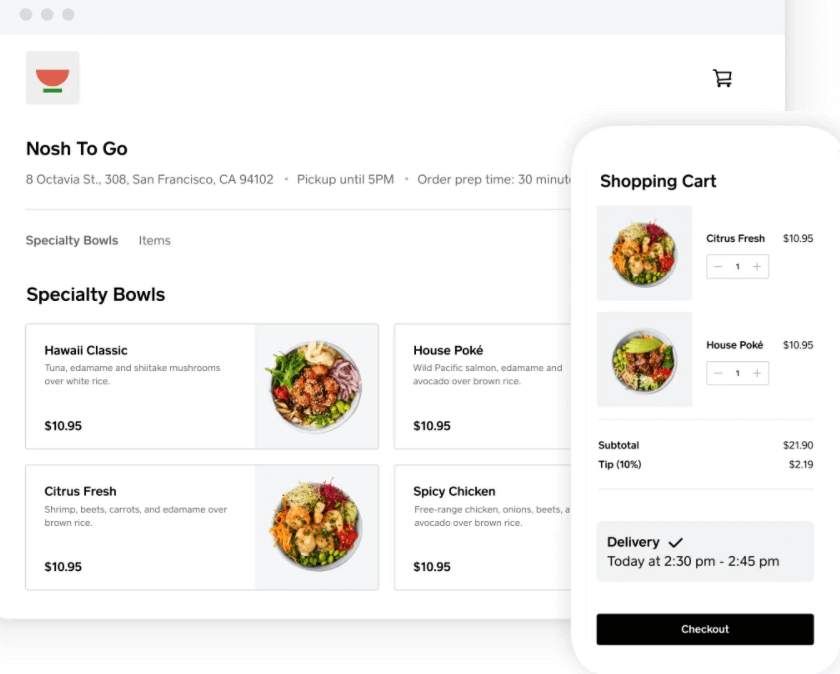
[Source]
Point-of-sale is software that replaced clunky manual machines and took the place of cash registers. Modern POS systems can operate on tablets, desktop computers, or smartphones.
POS systems work like this:
- Calculates the total order sum of the online order when a customer finishes adding items to their cart and clicks the app’s checkout button.
- Sends payments from customers to your bank account
- Sends receipts via email or text to customers to confirm whether the payment was successful
In some countries, you must provide clients with a paper receipt. The POS system will help you meet this regulation by printing a receipt for the online order on a receipt printer.
We suggest the following cloud-based POS applications for cloud kitchens:
In the case of providing payment on delivery, your couriers can use the cloud POS installed on an iPad connected to a Bluetooth-connected compact card reader.
A cloud-based POS allows check sales in the POS back office account and, if needed, sending a daily Excel report to the accountant.
Kitchen Display System (KDS)
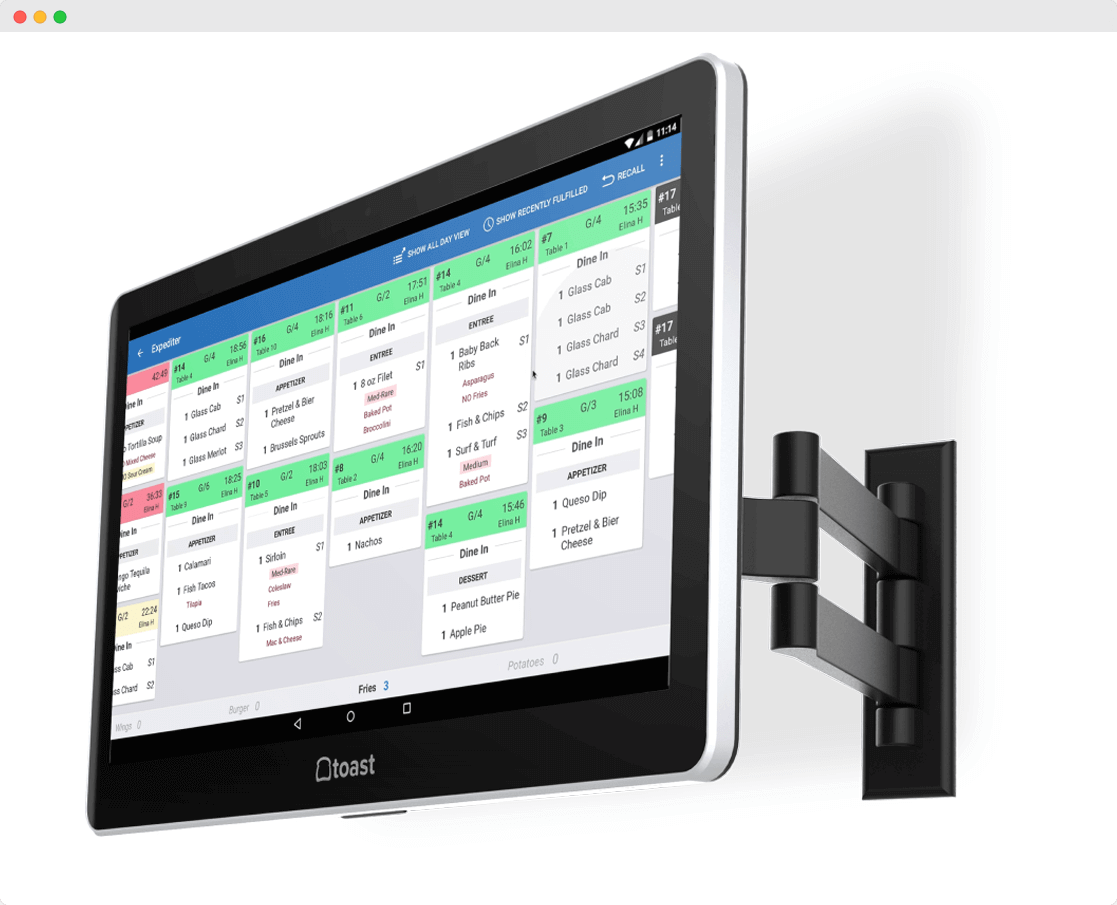
[Source]
To deliver meals in 30 minutes after the client has placed an order via the app, your kitchen staff needs to prepare ordered meals within 10-12 minutes.
To make new orders visible to chefs and cooks, you need to integrate a Kitchen Display System into your ghost kitchen environment. In plain terms, the KDS display system is a digital order viewer that replaces paper tickets and kitchen printers.
Here is how the KDS display system works:
- After the client places an order, KDS receives updated information about the order
- Then, the KDS system shows it to the kitchen staff who view the order details and order pick-up time to prepare the order accordingly
The good news is that you don’t need to create such a system from scratch. You can choose the right software from a list of existing third-party KDS:
Courier mobile app
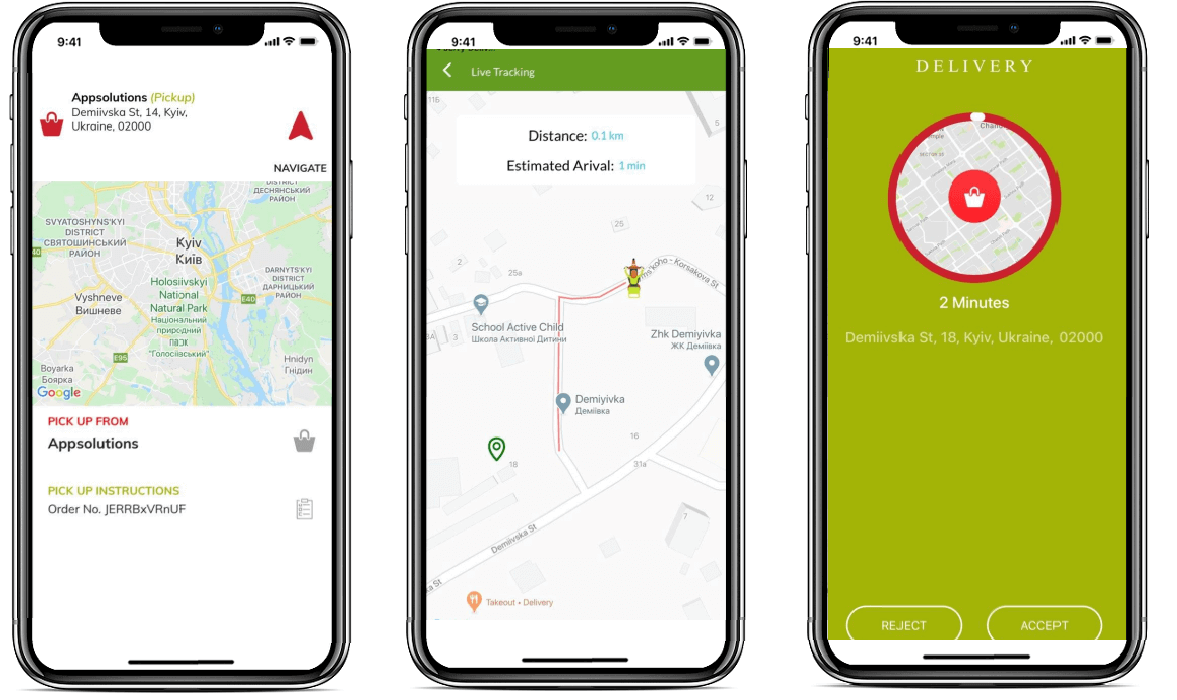
[The APP Solutions prototype for Alfred Ibiza, a food ordering app]
If you want to arrange your own delivery service instead of using third-party courier services, you’ll need a courier application. Using this application, your couriers will receive notifications on the new delivery request, accept them, and deliver meal orders to the customer’s address.
Such an application costs $20k + and takes The APP Solutions developers 2-4 months to deliver your project.
The main functionality for a courier application includes:
- Personal profile with contact details of a courier
- New requests section with order details and the delivery address
- Order history consists of all previous orders the courier delivered
- A built-in map that helps the courier navigate the city
- The estimated delivery time countdown shows how much time to deliver the order
Inventory management system
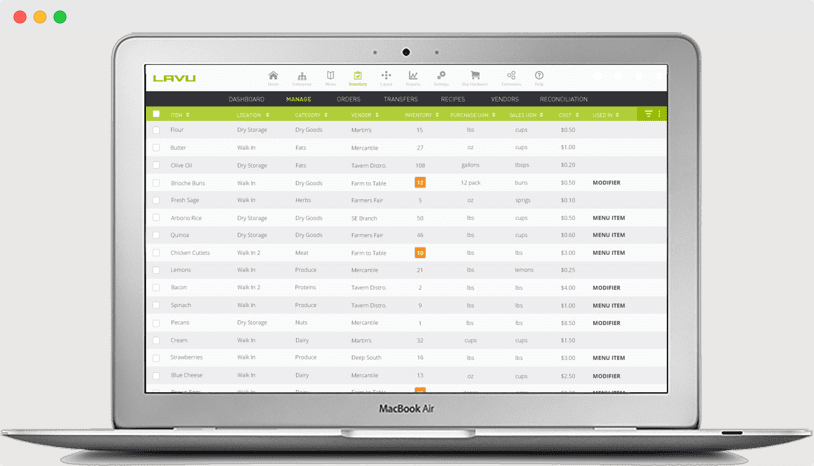
[Source]
The most frustrating thing that happens to customers is finding out that your order cannot be delivered because the restaurant doesn’t have the ingredients to cook it.
To avoid client frustration, cloud kitchen staff need to manage inventory effectively. The best way of doing this is to use inventory management software that tracks daily stock consumption and prompts to order more stock when needed.
An inventory management system also reduces wastage and keeps control of your food costs.
For an inventory management system, consider one of the following solutions:
Serving food from the cloud: the future of restaurants
Cloud kitchens are shaping the restaurant industry. They give restaurant owners unlimited flexibility to experiment with the menu, run several online restaurants on one cloud kitchen while saving money on renting several locations, and arranging business processes for several different restaurants.
Due to the small investment and risks, anyone can arrange a cloud kitchen.
We’ll soon witness even more delivery-only restaurants that receive higher profit than those working with food aggregators, paying high service fees and ending up with a smaller profit margin.
Maybe we’ll no longer associate the word “restaurant” with the brick-and-mortar facilities of traditional restaurants in the future.
Instead, we will associate the restaurant with a mobile application for ordering meals in several tabs, a cloud kitchen that cooks meals, and restaurant couriers that deliver orders on time.
Related readings:
KOTLIN VS. JAVA: WHAT TO CHOOSE FOR AN ANDROID APP?
UNDER THE HOOD OF UBER: THE TECH STACK
AUGMENTED REALITY IN RETAIL: NO LONGER AN OPTION, BUT A MUST
